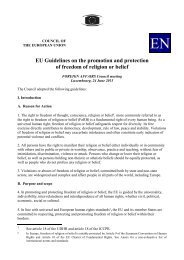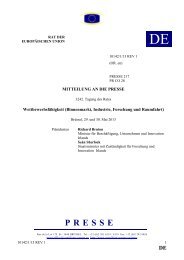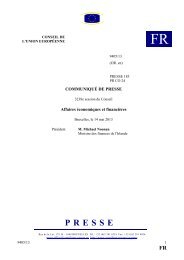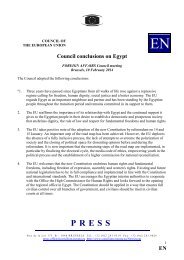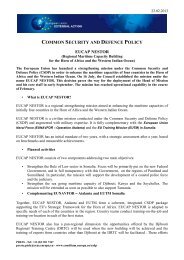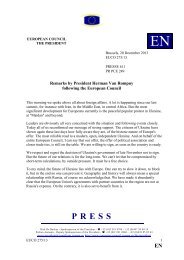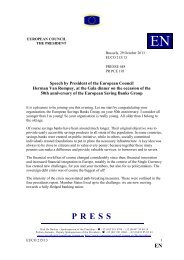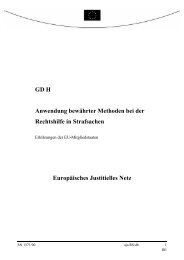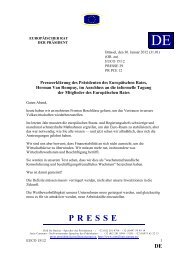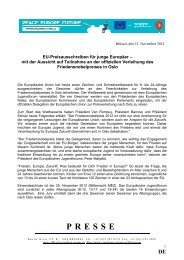14508/09 ADD 1 PL/vk 1 DG G COUNCIL OF THE ... - Europa
14508/09 ADD 1 PL/vk 1 DG G COUNCIL OF THE ... - Europa
14508/09 ADD 1 PL/vk 1 DG G COUNCIL OF THE ... - Europa
You also want an ePaper? Increase the reach of your titles
YUMPU automatically turns print PDFs into web optimized ePapers that Google loves.
When the Council of the European Union decided on the indicators in May 2007 it encouraged the<br />
MS and the Commission to undertake research on poverty amongst women and men in all relevant<br />
contexts, including, where appropriate, migrant and ethnic background and urban/rural location,<br />
with a view to drafting policies aimed at promoting social and professional inclusion.<br />
It also urged the Member States and the Commission to develop statistical capacity within the EU<br />
further, in the context of the Open Method of Coordination process on social protection and social<br />
inclusion focused on the individuals in households, in order to address the gendered nature of<br />
poverty and monitor the impact of policies upon women and men alike.<br />
In addition, it invited the MS to promote in-depth analysis of existing data from a gender<br />
perspective, as well as research, indicators and methodology on the issue of gender and poverty,<br />
thus ensuring that policies aimed at addressing poverty and social inclusion take gender equality<br />
into account.<br />
5.2. Education and Training of Women (B)<br />
Education has long been perceived as an essential vehicle of equality between women and men and<br />
the educational level of women has increased substantially in recent decades. Today girls and young<br />
women choose higher education, graduate faster than men, remain in school to completion and<br />
often outperform boys overall. Today girls and women have overall higher educational attainment<br />
than men and have a more diversified range of choices in scientific areas than men. Women<br />
dominate on the level of ISCED 5a in five broad fields of study and men in two. Among PhD<br />
graduates women are in the majority in five MS and very close to fifty percent in many countries,<br />
but at EU27 level men are in majority and in all EU countries there is a pattern in which men<br />
(68 %) outnumber women (32 %) in tertiary education in mathematics, sciences and technical<br />
disciplines.<br />
In all EU countries the employment rate for women and men increases as the level of educational<br />
attainment improves. Employment rates for women with high education are higher than men's with<br />
basic schooling in most countries. Even if the majority of women are very well educated, they are<br />
not fully used as a resource in the labour market.<br />
<strong>14508</strong>/<strong>09</strong> <strong>ADD</strong> 1 <strong>PL</strong>/<strong>vk</strong> 131<br />
ANNEX <strong>DG</strong> G EN



